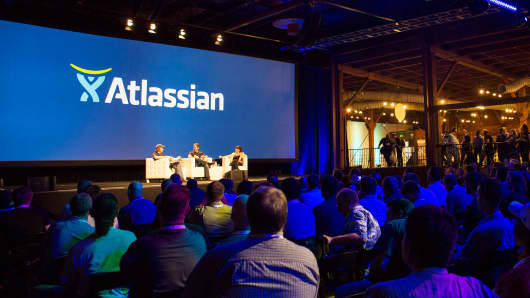
The last IPO of the year is set to price tonight, a prepackaged software company named Atlassian. It has the distinction of being the ONLY IPO in December, a rare event. This is the weakest December since 2008, when there were none. But that was 2008, a disastrous year.
It’s the end to a dismal year for IPOs. It started promisingly with a strong spate of IPOs. But cracks started showing in the middle of the year when after-market return for IPOs started heading south. Then the whole market had a big drop in July and August.
The bottom line: Many IPOs were cancelled for market conditions when the market headed south in July and August, and investors started demanding lower prices for those IPOs that did go public.
Here’s the way the market shook out: There were 169 IPOs this year, a nearly 40 percent decline from 2014, according to Renaissance Capital, which runs the Renaissance Capital IPO ETF (IPO), a basket of roughly 60 recent IPOs.
It wasn’t just the number, the dollar value of IPOs went from $85 billion to $30 billion, a decline of more than 60 percent. Remember, 2014 was the year Alibaba Group Holding went public at more than $20 billion, but even taking that out it was a lousy year.
One major reason was the drop in tech IPOs. There were only 23 in 2014, a 42 percent decline from 2014. What happened? Aside from market conditions, many tech companies were able to raise money in the private markets and felt no need to go public.
Not surprisingly, energy IPOs practically vanished: There were only 12, a more than 60 percent decline from 2014. But even biotech, which was the biggest IPO sector in 2014 with 102 offerings, dropped to 78 this year.
What about 2016? This does not bode well for the first part of the year. My sense is that you can write off any energy IPOs until the middle of the year, if then. Health care? While the biotech indices are up modestly for the year, they are way off their midyear highs. Also not a good sign.
Tech is the real wildcard. Venture capitalists who are backing many of the tech names are getting antsy. They need an exit strategy, which means a path to going public. How long will they wait? Or will they be willing to force a valuation haircut on their wards and force them to go public?
It’s not a crazy idea. They did with Square. Many of these VCs bought in early. It’s not unusual to see an average insider price at $2 to $3 for a company that goes public between $12 and $20. If they want to price at, say, $16, but are forced to cut the deal to, say, $12-$14, that may be disappointing, but it would hardly be a tragedy if you are owning the stock at $2 to $3.
[“source -cncb”]




